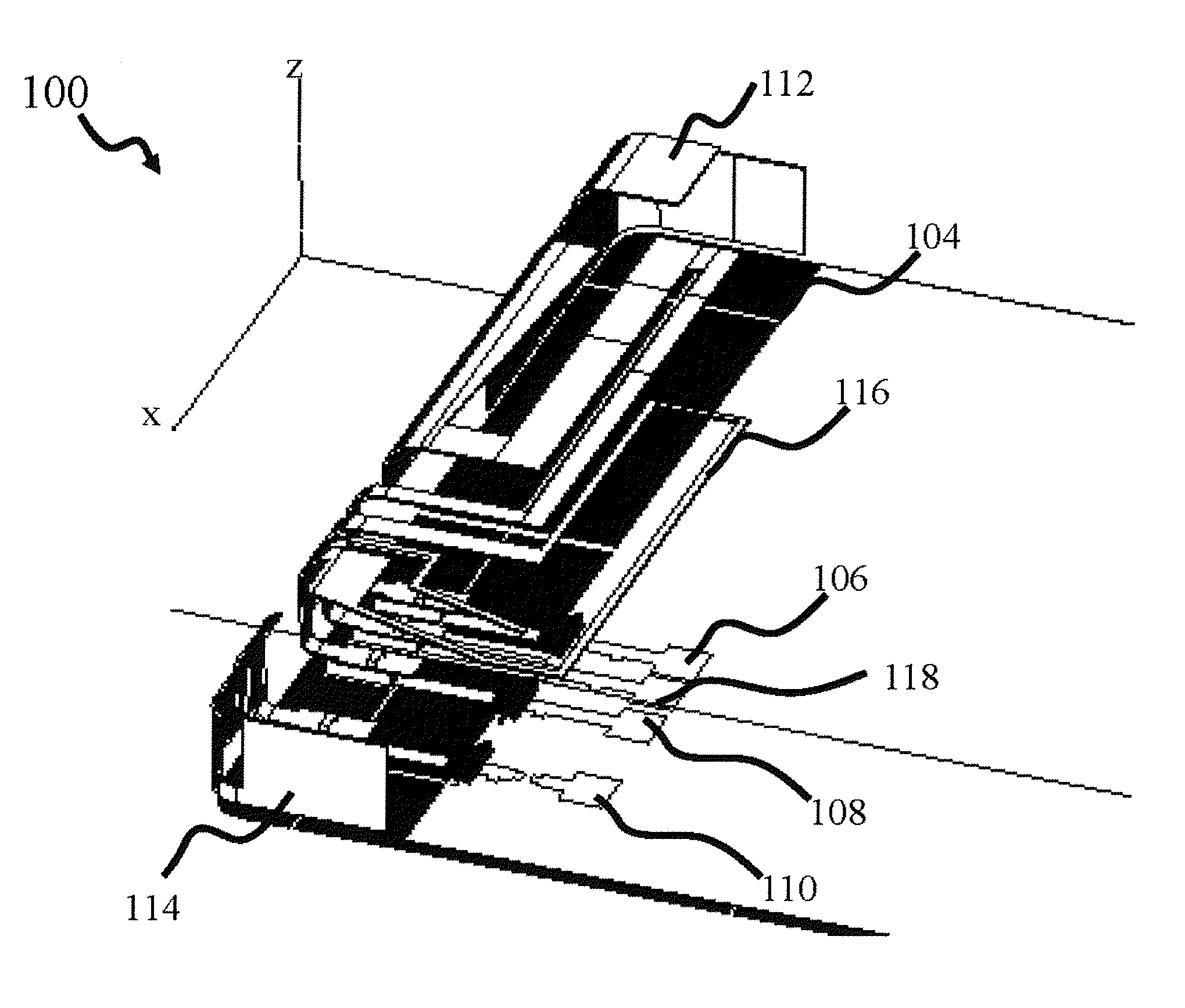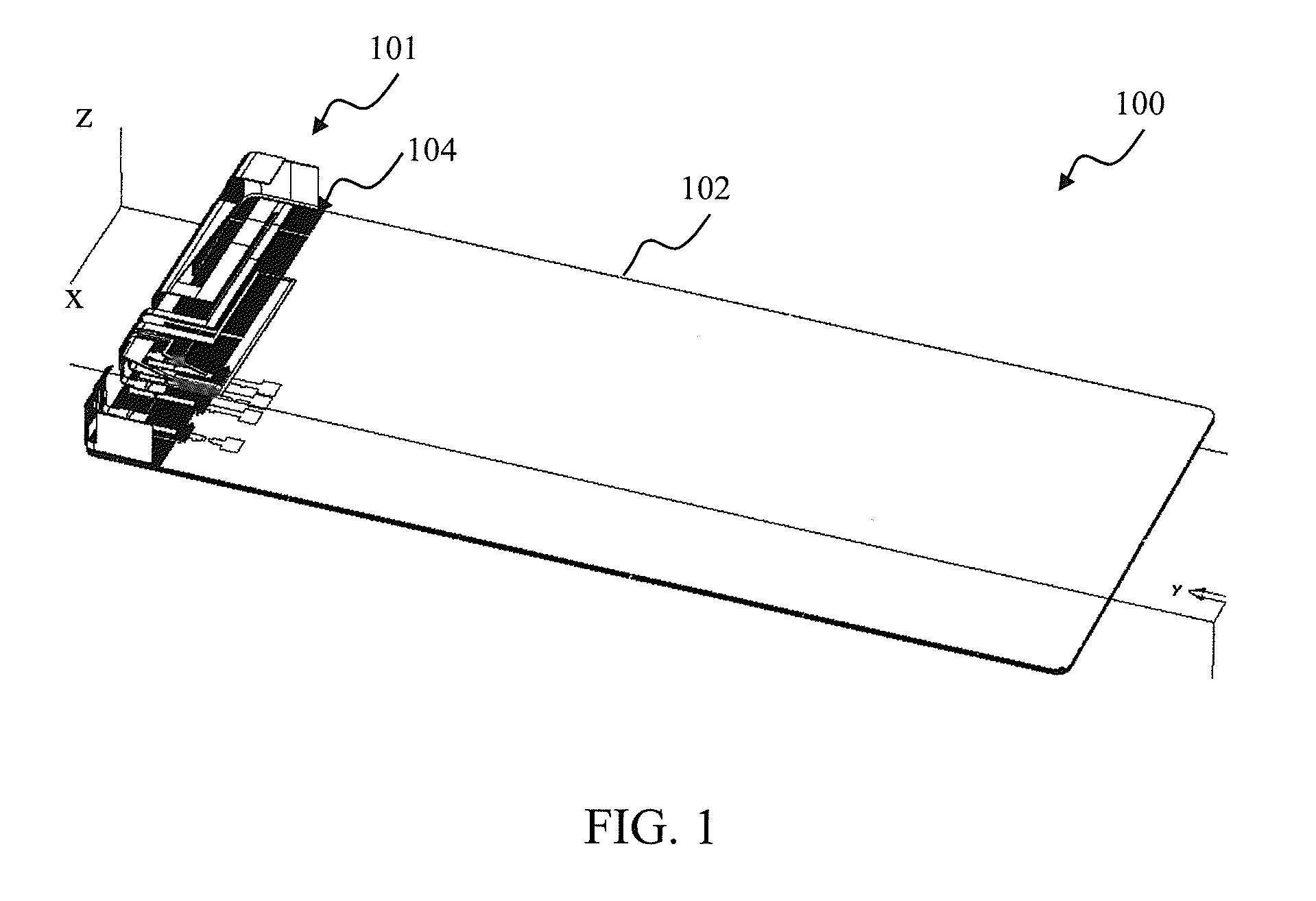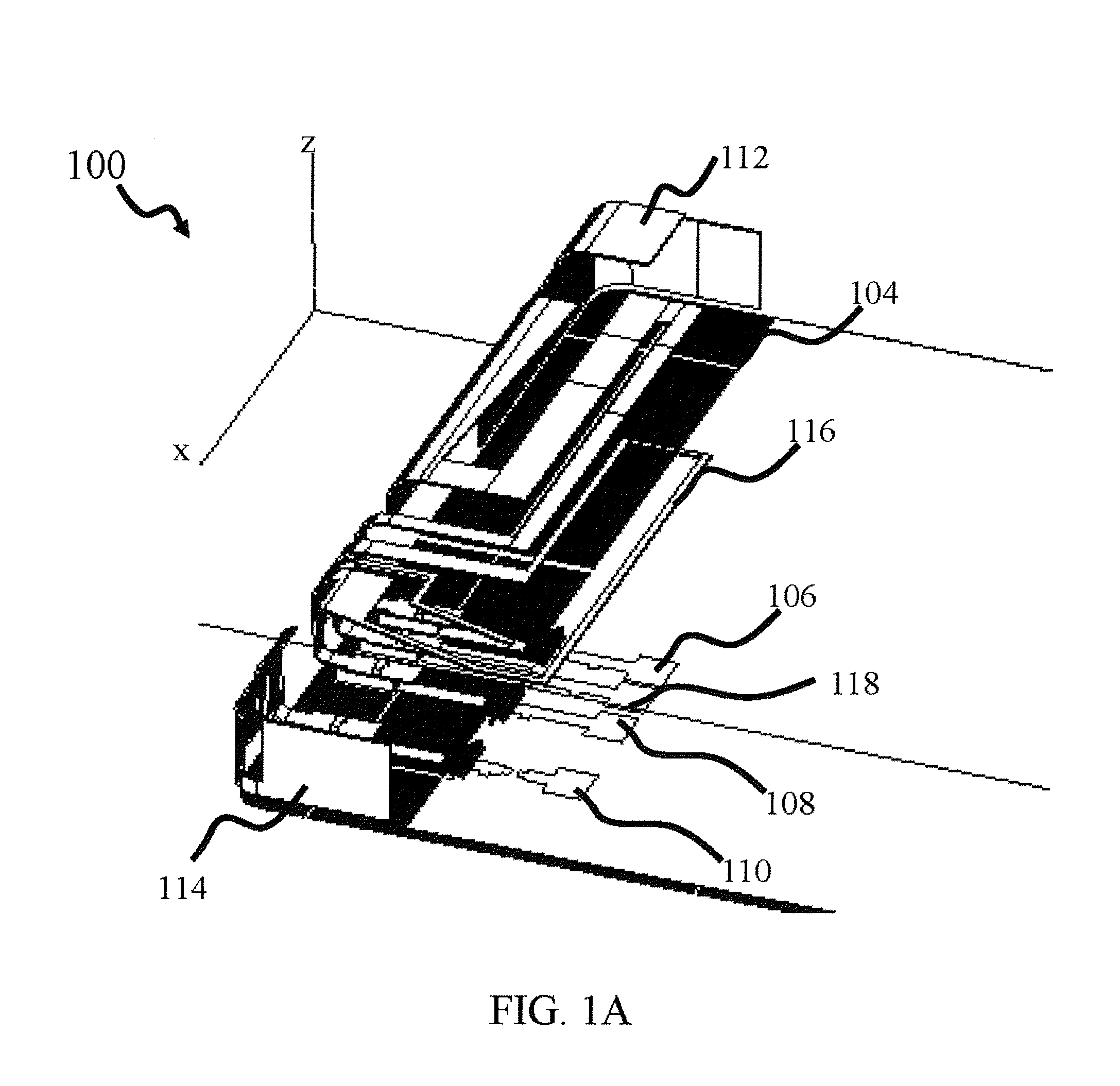Multi-feed antenna apparatus and methods
a multi-feed antenna and antenna technology, applied in the field of antenna equipment, can solve the problems of inability to support the various specific band pair implementations of single-feed rf front-ends, additional circuitry is required,
- Summary
- Abstract
- Description
- Claims
- Application Information
AI Technical Summary
Benefits of technology
Problems solved by technology
Method used
Image
Examples
example 1
[0075]Feed port 106: LB (PILA), feed port 108: 2.5-23 GHz (PILA), feed port 110: HB (PILA). This configuration provides sufficient feed to radiator isolation between the feed ports 108 and 110 due to a wide frequency gap (about 200 MHz) between the feed port 108 and 110 frequency bands.
example 2
[0076]Feed port 106: LB (PILA), feed port 108: 2.3-2.7 GHz (PILA), feed port 110: HB (PILA). This configuration does not provide sufficient feed to radiator isolation between the feed ports 108 and 110 due to a small frequency gap (about few MHz) between the feed port 108 and 110 frequency bands.
example 3
[0077]Feed port 106: LB (PILA), feed port 108: 2.3-2.7 GHz (Loop), feed port 110: HB (PILA). This configuration provides very good feed to radiator isolation for all feed ports in all frequency bands despite a small frequency gap between the feed ports 108 and 110 frequency bands.
[0078]In one embodiment, the matching circuits for the first and third feed ports are realized through use of tapped inductors 310, 314, respectively. The inductor 310, 314 are implemented, in one variant, as narrow conductive traces on the PCB, configured to achieve the desired inductance values. In another variant, the inductors 310, 314 are implemented using discrete components, e.g. chip inductors, wound toroids, ceramic multilayer, and wire-wound inductors, etc. Residual reactance of the circuits 302, 304 can be tuned with the shunt capacitors 312, 316, respectively, so as to create a dual resonance type of response in the first and third feed ports 106, 108. The matching circuit 308, corresponding to ...
PUM
 Login to View More
Login to View More Abstract
Description
Claims
Application Information
 Login to View More
Login to View More - R&D
- Intellectual Property
- Life Sciences
- Materials
- Tech Scout
- Unparalleled Data Quality
- Higher Quality Content
- 60% Fewer Hallucinations
Browse by: Latest US Patents, China's latest patents, Technical Efficacy Thesaurus, Application Domain, Technology Topic, Popular Technical Reports.
© 2025 PatSnap. All rights reserved.Legal|Privacy policy|Modern Slavery Act Transparency Statement|Sitemap|About US| Contact US: help@patsnap.com



